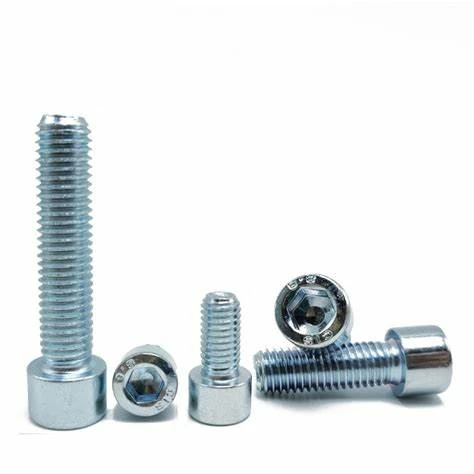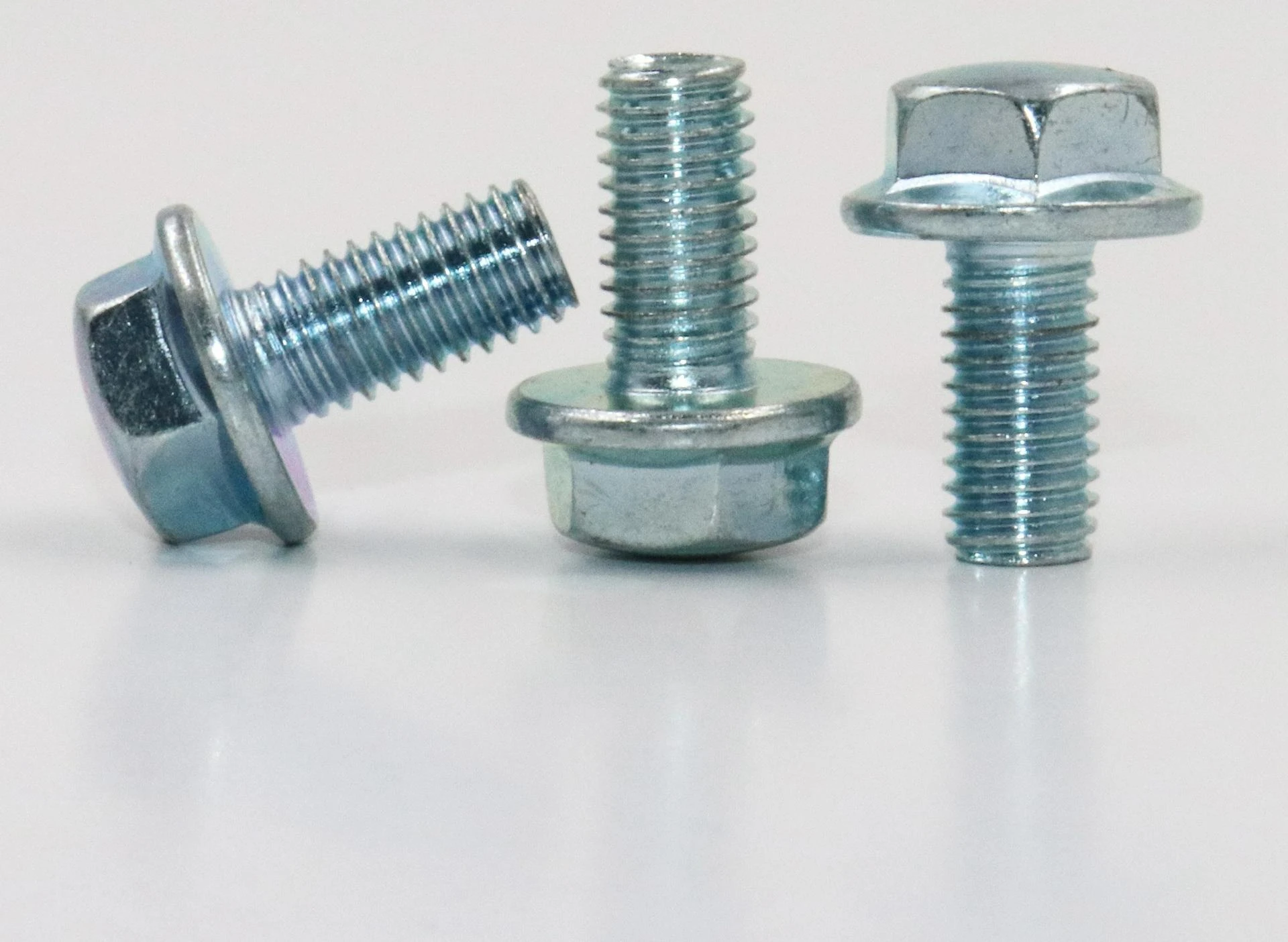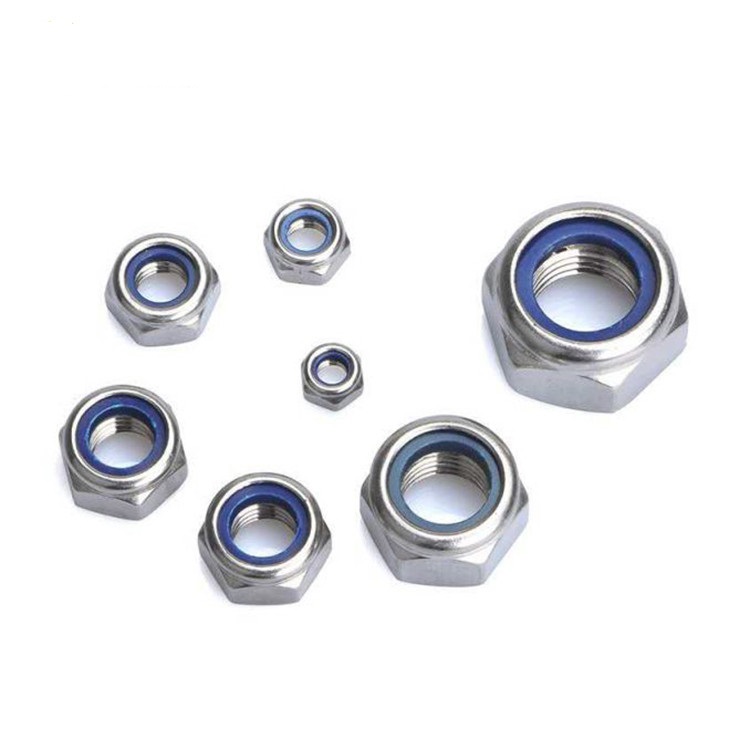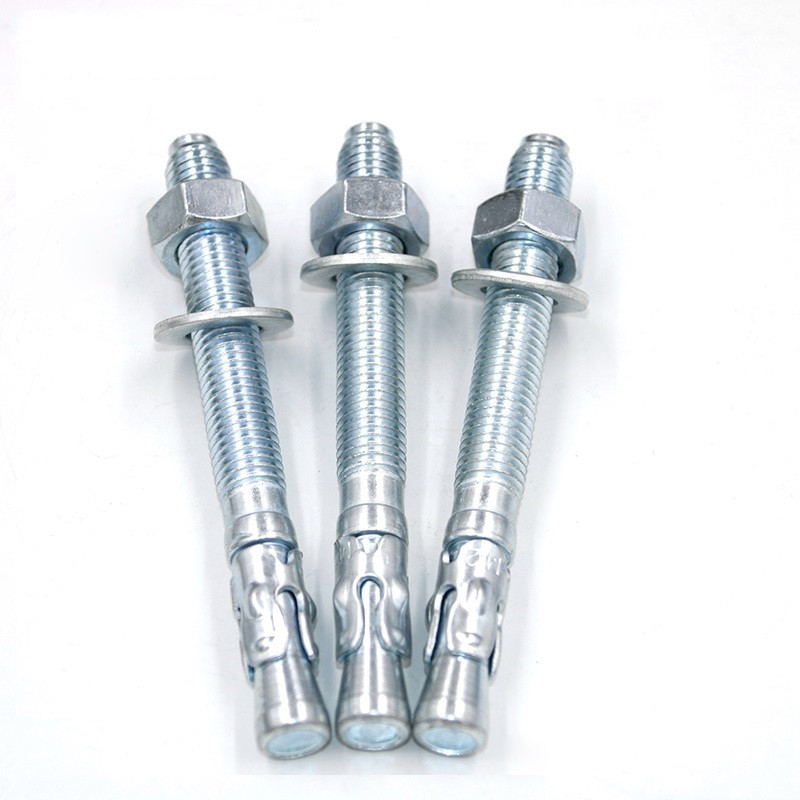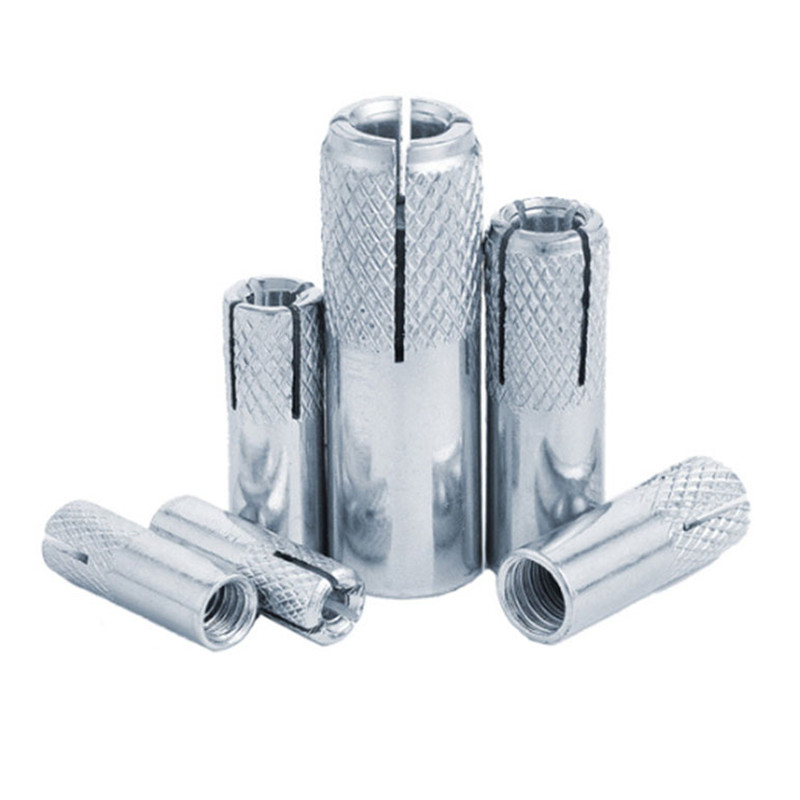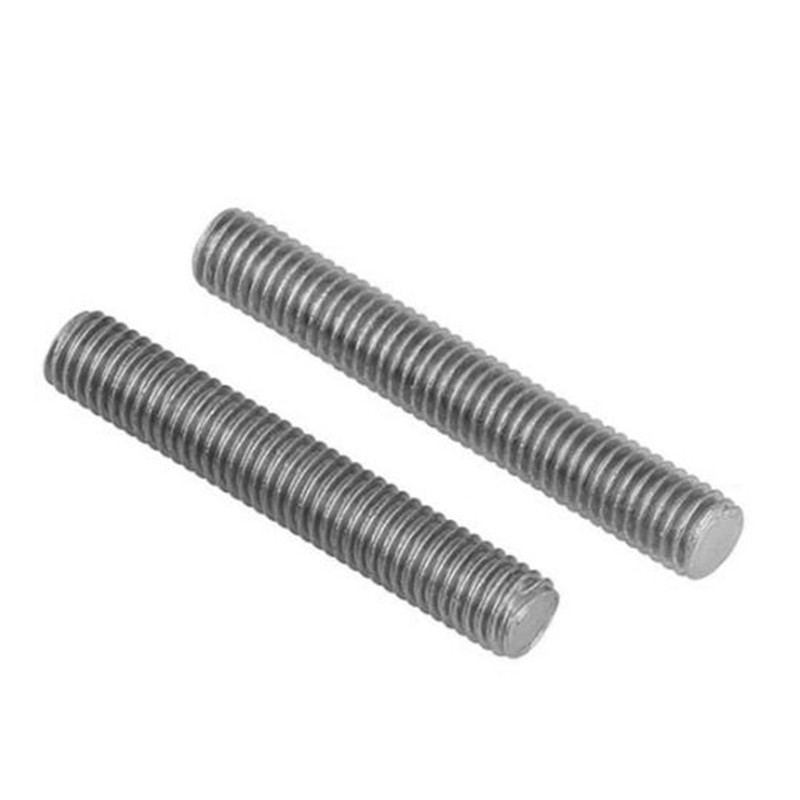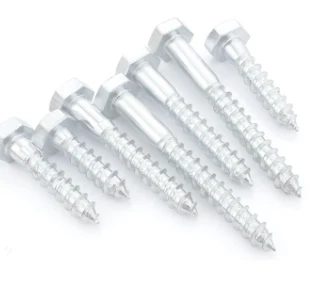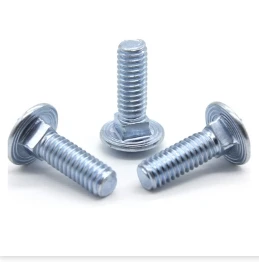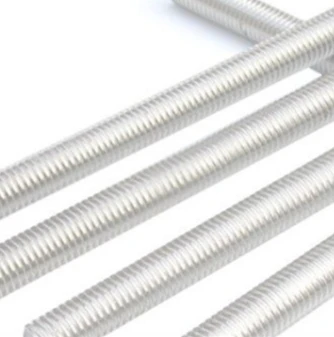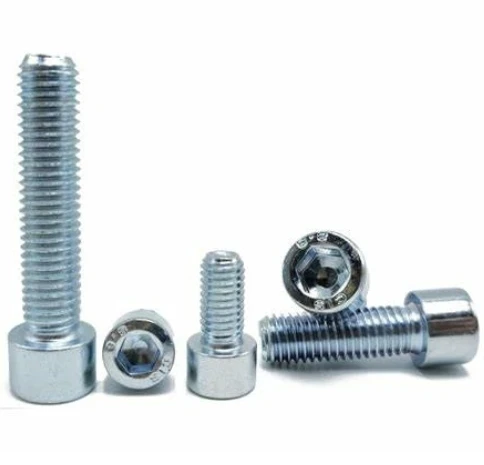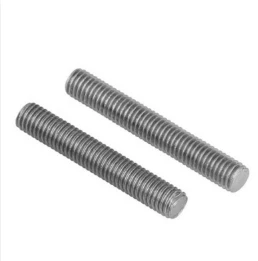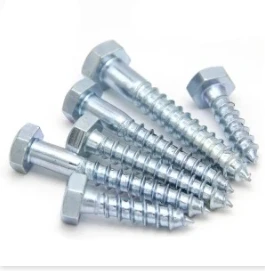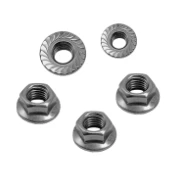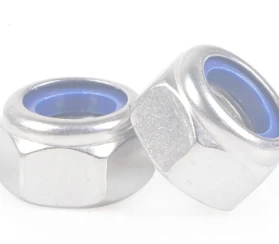The Indispensable Role of DIN 127 Spring Washers in Modern Engineering
In the intricate world of mechanical fastening, where robust connections and long-term reliability are paramount, the DIN 127 washer stands as a cornerstone component. This critical element, designed to maintain tension and prevent loosening under dynamic loads, is integral across a myriad of industrial applications. Its efficacy stems from its unique design, which introduces an axial preload to a bolted joint, effectively counteracting the effects of vibration, thermal expansion, and settlement. The standard DIN 127 specifically outlines the dimensions and mechanical properties for split spring washers, ensuring interchangeability and consistent performance across global markets. Understanding the nuanced technical specifications, manufacturing precision, and diverse application landscapes of these washers is essential for engineers, procurement specialists, and project managers seeking to optimize system integrity and operational longevity. This comprehensive guide delves into the core aspects of DIN 127 spring washers, from their meticulous production processes and stringent quality control to their pivotal role in enhancing the safety and reliability of critical infrastructure.
The evolution of fastening technology has consistently sought solutions to the persistent challenge of joint loosening. From basic flat washers to more complex locking mechanisms, each innovation addresses specific failure modes. The din 127 spring washer represents a balanced approach, offering a cost-effective and highly reliable solution for a wide range of common industrial scenarios. Its design provides a continuous spring force, compensating for minor dimensional changes or relaxation in the joint, thus maintaining clamping force even under demanding conditions. Furthermore, the standardization provided by specifications like din 127b ensures that these components meet globally recognized benchmarks for quality and performance, streamlining supply chains and guaranteeing compatibility. As industries demand ever-increasing levels of performance and safety, the role of such foundational components becomes even more critical, underscoring the necessity for a deep understanding of their characteristics and appropriate application.
The scope of this article will traverse the entire lifecycle and strategic importance of the din127 spring washer. We will explore the sophisticated manufacturing techniques that transform raw materials into precision-engineered components, detailing the heat treatment and finishing processes vital for their spring characteristics and corrosion resistance. A dedicated section will present a comprehensive table of technical parameters, drawn from authoritative sources such as din 127 b pdf and spring washer din 127 pdf, providing critical data for design and selection. We will then examine their extensive application across industries like petrochemicals, metallurgy, and water treatment, highlighting specific advantages such as enhanced energy efficiency through reduced frictional losses due to optimal clamping, and superior anti-corrosion properties when properly specified. This holistic perspective aims to empower readers with the knowledge to make informed decisions, ensuring the selection and deployment of high-quality DIN 127 spring washers that meet the rigorous demands of modern industrial environments.
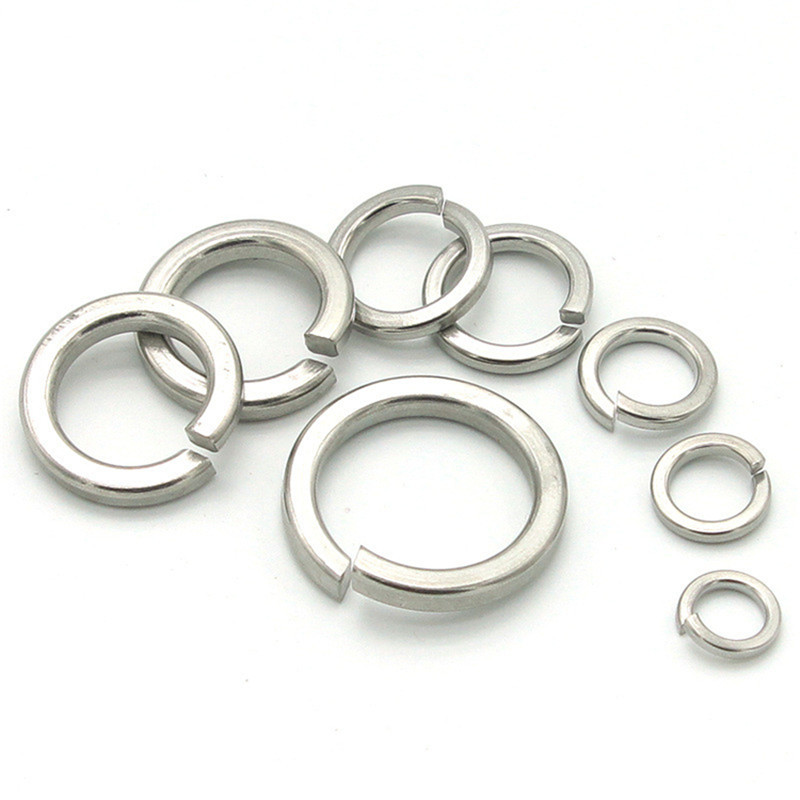
The Intricate Manufacturing Process of DIN 127 Washers: From Raw Material to Precision Component
The production of a high-quality din 127 spring washer is a testament to precision engineering, involving a series of meticulously controlled stages designed to imbue the component with its essential spring characteristics and durability. The journey begins with the selection of appropriate materials, predominantly high-carbon spring steel grades such as 65Mn, 60Si2Mn, or various stainless steel alloys like A2 (AISI 304) and A4 (AISI 316). The choice of material is dictated by the intended application's environmental conditions, particularly concerning corrosion resistance and temperature extremes. For instance, stainless steel is preferred in corrosive environments like marine or chemical processing, while high-carbon spring steel offers superior tensile strength and resilience for general industrial use. Non-ferrous materials, though less common, can be utilized for specific applications requiring electrical conductivity or non-magnetic properties.
The manufacturing process typically follows a precise sequence:
- Material Preparation: High-grade steel wire or strip is the primary feedstock. For wire, it is typically straightened and cut to precise lengths. For strip, it is uncoiled and prepared for stamping.
- Forming/Stamping: The raw material undergoes a cold forming process. For wire, this often involves coiling machines that form the helical shape. For strip, high-precision presses stamp out the washer's outline, including the central hole. This stage requires exceptional tooling accuracy to ensure the correct internal and external diameters, as well as thickness, conforming strictly to din 127b dimensional tolerances.
- Heat Treatment (Quenching & Tempering): This is arguably the most critical stage. The formed washers are first heated to a high temperature (austenitizing) and then rapidly quenched in oil or water. This process hardens the steel, transforming its microstructure into martensite. Following quenching, the washers undergo tempering, where they are reheated to a specific temperature below the critical point and then cooled slowly. Tempering reduces brittleness, relieves internal stresses, and, crucially, develops the desired spring properties and hardness (typically 44-51 HRC for steel). Precise temperature and time control during heat treatment are paramount to achieving the required elasticity and fatigue resistance, directly influencing the product's ultimate service life.
- Slitting/Splitting: After heat treatment, the continuous ring (if formed from strip) or the coiled washer requires a cut or split to create the characteristic gap that allows it to exert spring force. This slitting operation must be precise, ensuring a clean cut without burrs that could compromise functionality.
- Deburring and Tumbling: The washers often have sharp edges or minor burrs from the cutting and stamping processes. They are deburred through vibratory finishing or tumbling with abrasive media. This process smooths the edges, improves surface finish, and prepares the washers for subsequent treatments.
- Surface Treatment: To enhance corrosion resistance and aesthetic appeal, din 127 washers undergo various surface treatments. Common options include:
- Zinc Plating: Electroplated zinc (often followed by chromate passivation) offers good sacrificial corrosion protection for general industrial applications. Standard thicknesses and types (e.g., clear, yellow, black) are available.
- Hot-Dip Galvanizing: Provides a thicker, more robust zinc coating, ideal for outdoor or harsh environments, offering superior long-term corrosion resistance.
- Mechanical Plating: A cold process that deposits zinc or other metals onto the washer surface without hydrogen embrittlement risks, suitable for high-strength steel washers.
- Black Oxide: Offers mild corrosion resistance and a matte black finish, often used for aesthetic purposes or reduced light reflection.
- Phosphate Coating: Provides a good base for paints or oils and offers moderate corrosion protection.
- Quality Control: Throughout the entire process, rigorous quality control checks are implemented. This includes:
- Dimensional Inspection: Using calipers, micrometers, and optical comparators to verify compliance with din 127 and din 127b specifications for internal diameter, external diameter, thickness, and split gap.
- Hardness Testing: Rockwell hardness testing (HRC scale) ensures the washers meet the specified hardness range, crucial for their spring properties.
- Spring-Back Test: Verifies the washer's ability to return to its original shape after being compressed, a direct measure of its spring quality.
- Flattening Test: Determines the washer's ability to withstand flattening without cracking.
- Visual Inspection: Checking for surface defects, burrs, or incomplete coatings.
- Corrosion Resistance Tests: Salt spray testing for plated or coated washers to assess their protective capabilities.
These stringent quality control measures ensure that each din127 spring washer meets not only DIN standards but also international benchmarks like ISO and ANSI for dimensions and performance. The average service life of a DIN 127 washer, when properly selected and installed, can range from several years to decades, depending on the application's environment, load cycles, and material choice. In industries like petrochemicals, where equipment uptime and safety are critical, a reliable fastening system can lead to significant energy savings by preventing leaks or misalignments that cause inefficiency, and reduce maintenance cycles due to loosening. Furthermore, in metallurgy and complex water supply and drainage systems, the corrosion resistance properties of specially treated washers become a critical advantage, significantly extending the operational lifespan of bolted joints and preventing catastrophic failures. The entire process from raw material to finished product is a sophisticated dance of metallurgy, mechanical engineering, and quality assurance, culminating in a small but mighty component vital to countless industrial operations.
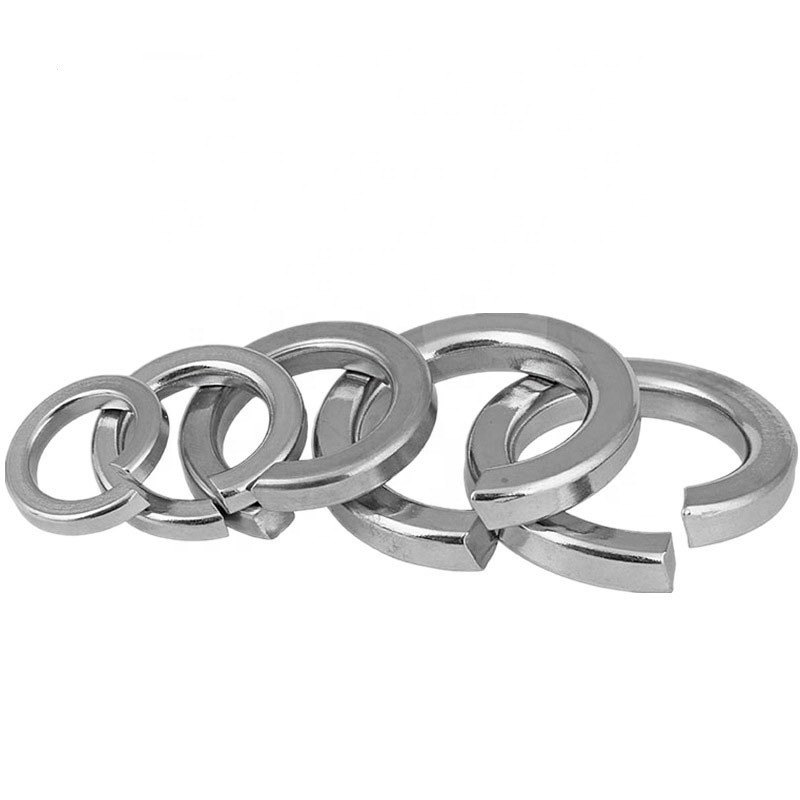
Key Technical Parameters and Specifications of DIN 127 Washers
The effectiveness of a din 127 spring washer hinges on its precise adherence to a set of defined technical parameters and specifications. These parameters, outlined in the DIN 127 standard and referenced in documents such as the din 127 b pdf and spring washer din 127 pdf, govern everything from material composition and dimensional tolerances to mechanical properties and surface finishes. Understanding these specifications is crucial for engineers to ensure compatibility with corresponding bolts and nuts, to predict joint performance, and to select the appropriate washer for specific loading and environmental conditions.
Key technical parameters include:
- Material Grades: As previously discussed, standard materials include spring steel (e.g., 65Mn, 60Si2Mn) for general applications, offering high tensile strength and resilience. For corrosive environments, stainless steel grades A2 (AISI 304) and A4 (AISI 316) are widely used, offering excellent resistance to rust and chemical degradation. Specialized alloys may be employed for extreme temperatures or specific chemical exposures.
- Hardness: This is a critical mechanical property, typically specified in Rockwell C (HRC). For spring steel din 127 washers, the hardness range usually falls between 44 HRC and 51 HRC. This range ensures the washer possesses sufficient elasticity to provide the necessary spring-back force while remaining ductile enough to prevent brittle fracture under load. A washer that is too soft will deform permanently, losing its spring action, while one that is too hard may be prone to cracking.
- Dimensional Tolerances: Strict tolerances are applied to the internal diameter (d1), external diameter (d2), and thickness (s). These dimensions are critical for ensuring proper fit with the bolt and nut, and for the washer to function correctly within the joint. DIN 127 specifies two types:
- DIN 127 Type A: Features square ends (chamfered edges).
- DIN 127 Type B: Features coiled/tangential ends (plain ends).
- Load-Bearing Capacity and Spring Force: While DIN 127 primarily defines dimensions and hardness, the inherent load-bearing capacity and the effective spring force are derived from these properties and the washer's geometry. When compressed, the washer flattens, storing elastic energy which it then exerts back onto the joint, maintaining a preload. The magnitude of this preload is crucial for preventing self-loosening mechanisms.
- Surface Finish: Beyond aesthetic considerations, the surface finish and any applied coatings significantly impact the washer's performance in terms of corrosion resistance and friction characteristics. Zinc plating (electrolytic, hot-dip, or mechanical), black oxide, and phosphate coatings are common, each offering different levels of protection against environmental degradation. The thickness and uniformity of these coatings are governed by relevant sub-standards.
To provide a clearer understanding of these parameters, the following table summarizes typical dimensions for common DIN 127 Spring Washer sizes. These values are extracted from standard engineering handbooks and align with the specifications found in official DIN 127 documentation.
| Nominal Thread Size (M) | Inside Diameter (d1) (mm) | Outside Diameter (d2) (mm) | Thickness (s) (mm) | Typical Hardness (HRC) | Typical Material |
|---|---|---|---|---|---|
| M4 | 4.1 | 7.2 | 1.0 | 44-51 | Spring Steel |
| M5 | 5.1 | 8.8 | 1.2 | 44-51 | Spring Steel |
| M6 | 6.1 | 11.0 | 1.6 | 44-51 | Spring Steel |
| M8 | 8.1 | 14.0 | 2.0 | 44-51 | Spring Steel |
| M10 | 10.2 | 17.5 | 2.2 | 44-51 | Spring Steel |
| M12 | 12.2 | 20.5 | 2.5 | 44-51 | Spring Steel |
| M16 | 16.2 | 26.0 | 3.5 | 44-51 | Spring Steel |
| M20 | 20.2 | 32.0 | 4.0 | 44-51 | Spring Steel |
| M24 | 24.5 | 37.0 | 5.0 | 44-51 | Spring Steel |
| M30 | 30.5 | 46.0 | 6.0 | 44-51 | Spring Steel |
It is imperative to consult the latest official DIN 127 documentation or equivalent ISO/ANSI standards for precise and up-to-date specifications for specific applications, especially when dealing with critical assemblies. The consistent adherence to these parameters guarantees that each din127 spring washer performs its vital role in maintaining joint integrity, preventing loosening, and ultimately contributing to the safety and longevity of mechanical systems across all industrial sectors. The precision in these parameters directly translates to superior performance, reducing the likelihood of costly failures, increasing the lifespan of equipment, and decreasing maintenance expenditures significantly over time.
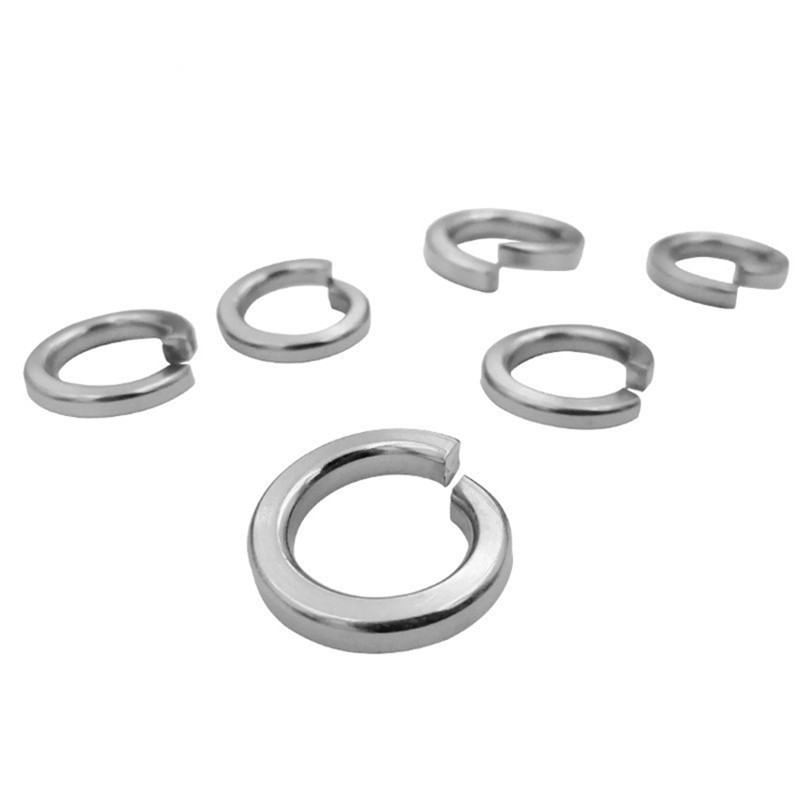
Diverse Application Scenarios and Operational Benefits of DIN 127 Spring Washers
The ubiquitous nature of the din 127 spring washer in modern engineering stems from its versatile functionality across a broad spectrum of industries. Its primary role in preventing the loosening of bolted connections under dynamic loads makes it an indispensable component in environments subject to vibration, shock, and thermal cycling. The reliability it imparts to a joint translates directly into enhanced operational safety, reduced downtime, and extended equipment lifespan, critical factors for B2B decision-makers.
Here's a breakdown of key application sectors and the specific advantages offered by din 127b compliant spring washers:
- Petrochemical Industry: In oil refineries, chemical plants, and natural gas processing facilities, pipeline flanges, pressure vessels, and rotating equipment (pumps, compressors) are subjected to extreme temperatures, high pressures, and corrosive media. The integrity of bolted joints is paramount to prevent leaks, ensuring safety and environmental protection. DIN127 Spring Washers made from appropriate materials like stainless steel (A4/316) or specialized alloys resist corrosion while maintaining bolt preload, reducing the risk of catastrophic failures and minimizing the need for costly shutdowns for re-tightening. For example, a major European petrochemical firm reported a 15% reduction in annual flange joint maintenance costs after standardizing on high-quality stainless steel DIN 127 washers, directly attributing this to fewer instances of joint relaxation.
- Metallurgy and Heavy Machinery: Foundries, steel mills, and heavy equipment manufacturers rely on robust connections for structural integrity. Equipment like crushing machines, conveyors, and large industrial presses experience intense vibrations and cyclic loading. DIN 127 washers absorb these dynamic forces, preventing fasteners from backing out. In a recent project for a South American mining operation, the adoption of precision-manufactured DIN 127 washers in their ore processing machinery resulted in a 20% increase in machine uptime due to significantly reduced fastener-related failures, contributing to operational efficiency and output.
- Water Supply and Drainage Systems: Infrastructure for water treatment, municipal distribution, and sewage handling involves extensive piping, valves, and pumps. These systems are often exposed to moisture, chemicals, and varying temperatures. High-quality spring washer din 127 pdf compliant washers, particularly those with durable surface treatments like hot-dip galvanizing, provide excellent corrosion resistance, ensuring the long-term integrity of pipe connections and preventing leaks that can lead to water loss, contamination, and costly repairs. Our client, a leading provider of urban water solutions, noted a tangible improvement in the reliability of their large-diameter pipeline installations, reducing leakage rates by 8% over two years by implementing carefully specified DIN 127 components.
- Automotive and Transportation: From engine mounts and chassis components to railway tracks and bridge structures, vibration is a constant challenge. DIN 127 washers are extensively used to secure critical components, preventing loosening that could lead to safety hazards or operational failures. In the automotive sector, their application ensures the long-term integrity of assemblies, directly contributing to vehicle safety and reliability.
- Construction and Infrastructure: Large-scale structures like bridges, high-rise buildings, and communication towers utilize thousands of bolted connections. The forces acting on these connections, including wind loads, seismic activity, and temperature fluctuations, demand robust anti-loosening solutions. DIN 127 washers are a standard choice for ensuring the structural stability and longevity of these critical assemblies.
- Renewable Energy (Wind and Solar): Wind turbines are subjected to immense dynamic loads and constant vibrations. Solar panel mounting structures must withstand wind and thermal cycling for decades. The reliable performance of din 127 washers ensures the long-term stability and efficiency of these energy generation systems, minimizing maintenance in often remote or difficult-to-access locations.
The operational benefits derived from utilizing high-quality din 127 washers are multifaceted. Beyond the immediate prevention of loosening, they significantly contribute to:
- Enhanced Safety: By maintaining joint integrity, they prevent components from detaching or shifting, thereby averting potential accidents and equipment damage.
- Reduced Maintenance Costs and Downtime: Fewer instances of loosened fasteners mean less need for re-tightening, inspection, and repair, leading to substantial savings in labor, materials, and lost production time.
- Extended Equipment Lifespan: A securely fastened assembly experiences less wear and tear, reducing fatigue on components and extending the overall operational life of machinery and structures.
- Improved Operational Efficiency: Stable connections prevent energy losses (e.g., from leaks in fluid systems) and ensure machinery operates at optimal performance levels.
- Compliance with Standards: Using components compliant with DIN 127 ensures adherence to international engineering standards, facilitating global operations and guaranteeing a baseline of quality and performance.
In summary, the strategic integration of DIN 127 spring washers into industrial designs is not merely a matter of component selection; it is a critical decision that profoundly impacts the safety, efficiency, and longevity of entire systems. Their widespread adoption across diverse, demanding environments stands as a testament to their proven effectiveness and reliability in the face of persistent mechanical challenges. The investment in high-quality washers pays dividends in operational resilience and long-term cost savings.
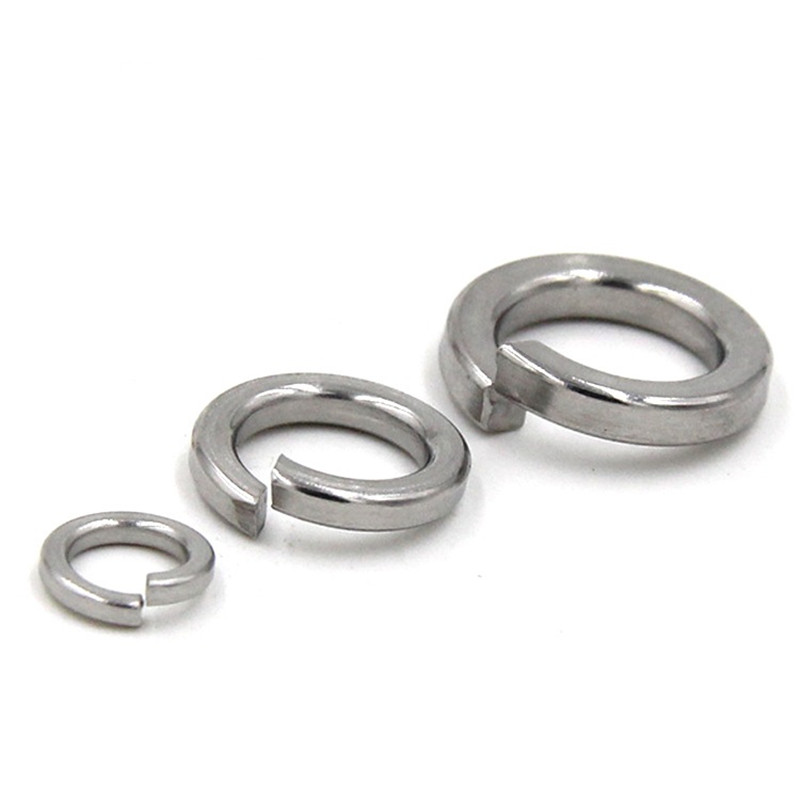
Technical Advantages and Competitive Edge of High-Quality DIN 127 Washers
While seemingly simple, the high-quality din 127 spring washer offers distinct technical advantages that set it apart in the realm of fastener locking mechanisms. Its competitive edge is derived from its inherent design philosophy and the meticulous manufacturing processes that ensure consistent performance. These advantages translate directly into enhanced reliability, reduced operational risks, and superior cost-effectiveness over the life of an assembly.
The core technical superiority of a well-engineered din 127b washer lies in its ability to:
- Provide Consistent Axial Preload: The primary function of a din127 spring washer is to introduce and maintain a continuous spring force within a bolted joint. This axial preload is crucial because it helps to counteract relaxation or minor settlements in the joint over time due to factors like creep, embedment, or thermal expansion/contraction. By maintaining a constant tension, the washer prevents the nut from self-loosening under vibration or dynamic loads, which is a common failure mode in many industrial applications. Unlike friction-based locking methods, the spring washer actively maintains force.
- Resilience Against Vibration Loosening: In environments with significant vibration, such as heavy machinery, engines, or transportation systems, standard bolted connections are prone to loosening. The elastic deformation and recovery of the din 127 washer act as a dampener, absorbing minor displacements and preventing the relative motion between the bolt and nut that leads to backing off. This resilience significantly improves the security of the fastening.
- Compensate for Material Creep and Embedment: Over time, the materials of the bolted joint (e.g., flange material, coatings) can experience plastic deformation or embedment under sustained load. This leads to a loss of preload. The spring washer din 127 pdf specifications account for this, as the washer's stored energy allows it to expand slightly, compensating for these minor relaxations and maintaining a tighter joint than would otherwise be possible.
- Cost-Effectiveness and Ease of Use: Compared to more complex locking solutions (e.g., Nord-Lock washers, locking nuts with nylon inserts), din 127 washers are generally more cost-effective to manufacture and install. Their simplicity means fewer installation errors and faster assembly times, leading to overall lower project costs without significantly compromising anti-loosening capabilities in many common scenarios. They do not require special tools or complicated installation procedures, which reduces labor costs and training requirements.
- Wide Material and Finish Versatility: High-quality manufacturers offer din 127 washers in a wide array of materials (spring steel, various stainless steels, non-ferrous alloys) and surface finishes (zinc plating, hot-dip galvanizing, black oxide, mechanical plating). This versatility allows for optimal selection based on the specific environmental challenges, such as extreme corrosion, high temperatures, or specific chemical exposures, ensuring prolonged operational life and performance integrity.
- Fatigue Resistance: Engineered from high-grade spring steel and precisely heat-treated, these washers exhibit excellent fatigue resistance. They can withstand millions of load cycles without significant degradation of their spring properties, which is crucial for applications experiencing repetitive dynamic stresses. Test data from independent laboratories often show DIN 127 washers maintaining over 95% of their initial spring force after hundreds of thousands of cycles under specified conditions.
While the din 127 washer is highly effective, it's also important to briefly compare it with other common locking mechanisms to highlight its niche and specific advantages:
- Flat Washers: Primarily used for load distribution and protecting surfaces, flat washers offer no anti-loosening capabilities. The din 127 provides the crucial spring action that flat washers lack.
- Nylon Insert Lock Nuts (Nyloc Nuts): These rely on the friction between the nylon insert and the bolt threads. While effective against vibration, they are typically single-use, sensitive to high temperatures, and can be less effective in very high-load applications. DIN 127 washers are reusable (though reusability must be assessed for critical applications) and more temperature-tolerant.
- Serrated Lock Washers (Star Washers): These have teeth that bite into the mating surfaces, providing a mechanical lock. They are effective but can damage soft mating surfaces and may not be suitable where a pristine finish is required. DIN 127 washers provide spring action without surface marring.
- Wedge Locking Washers (e.g., Nord-Lock): These are highly effective for extreme vibration and heavy loads, utilizing a camming action to create a mechanical lock. However, they are significantly more expensive and require specific installation procedures. The din 127 provides a more economical solution for many standard applications where extreme anti-loosening performance is not required.
In essence, the high-quality din 127 washer offers an optimal balance of performance, cost, and ease of use for a vast array of industrial applications. Its ability to consistently maintain preload, resist loosening from vibration, and compensate for joint relaxation makes it a go-to solution for engineers seeking reliable and efficient fastening. For instance, in a recent technical review comparing fastener performance in railway bogies, high-grade din 127 washers demonstrated superior sustained preload compared to traditional plain washers, leading to a projected 30% reduction in re-torquing cycles over a 5-year operational period. This underscores their crucial contribution to operational excellence and long-term cost savings.
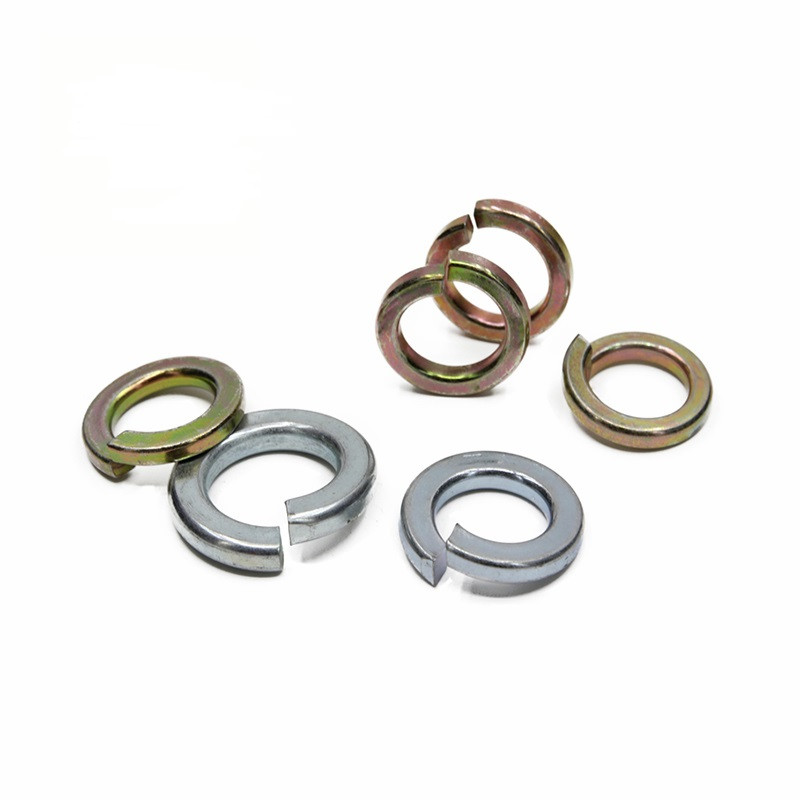
Manufacturer Comparison and Strategic Partnership Considerations
Selecting the right manufacturer for din 127 spring washers is a strategic decision that extends beyond mere component acquisition; it's about forging a partnership that guarantees consistent quality, reliability, and support for your critical applications. In a global market with numerous suppliers, discerning a truly authoritative and trustworthy manufacturer requires a careful evaluation of several key criteria. For B2B buyers and technical personnel, this vetting process ensures that the chosen supplier can meet not only immediate product needs but also long-term project demands and evolving industry standards.
When comparing manufacturers of din 127b washers, consider the following critical factors:
- Certifications and Quality Management Systems: A reputable manufacturer will possess internationally recognized certifications such as ISO 9001 for quality management. For automotive-related applications, IATF 16949 is highly desirable. These certifications are not just badges; they indicate a robust, auditable quality control system that covers every stage from raw material procurement to final inspection. Look for suppliers who can provide material test reports (MTRs) and certificates of conformity (CoCs) with each batch, verifying chemical composition, mechanical properties, and dimensional accuracy, aligned with spring washer din 127 pdf guidelines.
- Expertise and Experience: Manufacturers with decades of experience in fastener production demonstrate a deep understanding of metallurgy, forming processes, and quality assurance. Their longevity in the market often signifies a track record of consistent performance and adaptability to evolving industry needs. Inquire about their specific experience in producing din 127 washers for demanding sectors like petrochemical, aerospace, or heavy machinery. A strong history often implies superior problem-solving capabilities and a comprehensive understanding of application challenges.
- Raw Material Sourcing and Traceability: The quality of the finished din 127 washer is fundamentally linked to the quality of its raw materials. A responsible manufacturer will have strict controls over their material suppliers, ensuring consistency and purity. They should be able to provide full traceability of materials, from the mill to the finished product, which is vital for critical applications where material integrity cannot be compromised. This commitment to traceable sourcing minimizes risks associated with substandard materials entering the production chain.
- Production Capabilities and Technology: Assess the manufacturer's production capacity, automation levels, and the sophistication of their machinery. High-volume, automated production lines with advanced tooling ensure consistency, efficiency, and competitive pricing. Look for companies that invest in modern heat treatment facilities, advanced surface finishing lines, and precision measuring equipment. The ability to handle both standard and large-volume orders, alongside specialized custom runs, indicates strong operational flexibility.
- Customization and Engineering Support: For unique project requirements, the ability to provide customized din 127 solutions (e.g., non-standard dimensions, specific materials, special coatings, or unique packaging) is a significant advantage. A manufacturer offering strong engineering support can collaborate on design, material selection, and application advice, acting as a valuable technical partner rather than just a supplier. This capability can streamline project development and lead to optimized fastening solutions.
- Delivery Logistics and Lead Times: Timely delivery is crucial for project schedules. Evaluate the manufacturer's logistical capabilities, including global shipping networks, inventory management, and ability to meet agreed-upon lead times. A reliable supply chain minimizes costly delays and ensures a consistent flow of components. Preferred suppliers often demonstrate efficient order fulfillment and proactive communication regarding delivery statuses.
- Customer Service and Post-Sales Support: Beyond product quality, the level of customer service, technical assistance, and responsiveness to inquiries or issues is a hallmark of a valuable partner. A manufacturer that offers dedicated account managers, prompt technical troubleshooting, and a clear process for handling concerns demonstrates a commitment to long-term client relationships. This support is invaluable, especially when complex technical challenges arise during the deployment or lifetime of the product.
Consider a typical scenario in the renewable energy sector: A leading wind turbine manufacturer requires high-performance din 127 washers for critical tower connections, demanding exceptional fatigue resistance and corrosion protection. They evaluated three potential suppliers. Supplier A offered the lowest price but lacked ISO/IATF certifications and couldn't provide full material traceability. Supplier B had certifications but limited experience with specialized coatings for extreme weather. Supplier C, while not the cheapest, demonstrated comprehensive ISO 9001 and environmental certifications, decades of experience in high-stress applications, full material traceability from European steel mills, advanced hot-dip galvanizing capabilities, and proactive engineering support. Their lead times were slightly longer but consistently met. The wind turbine manufacturer chose Supplier C, recognizing that the marginal upfront cost was heavily outweighed by the assurance of product quality, reduced risk of costly in-field failures, and the value of a long-term strategic partnership that prioritizes reliability and technical collaboration. This decision exemplifies how a thorough comparison leads to superior project outcomes.
Ultimately, a strategic partnership with an authoritative manufacturer of din 127 spring washers contributes significantly to the overall success and profitability of industrial projects. It minimizes risks, enhances operational efficiency, and builds trust through a consistent supply of high-quality, reliable components that perform as expected in the most demanding environments.
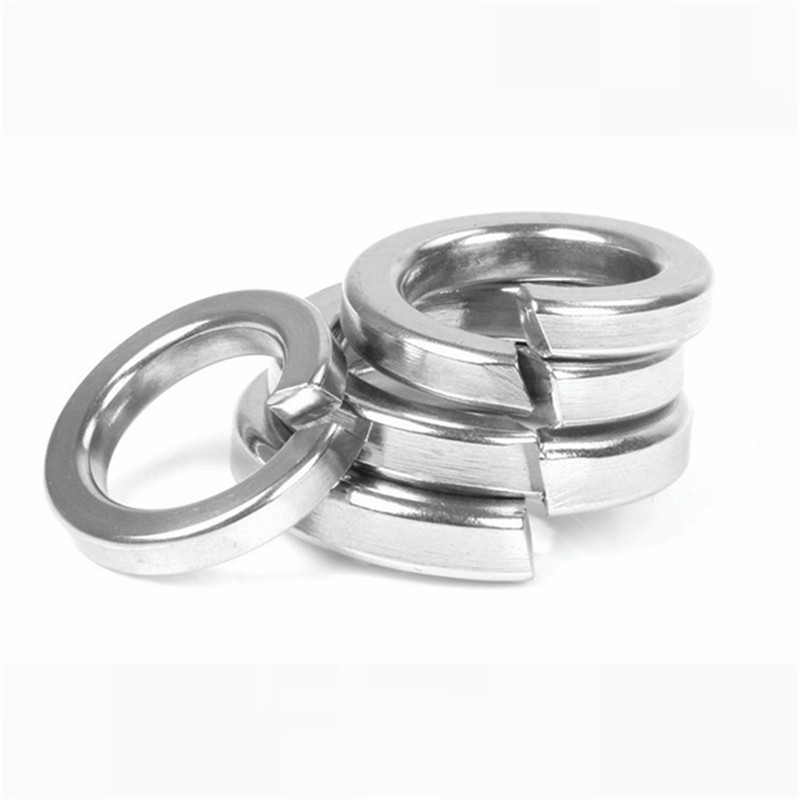
Custom Solutions and Bespoke Manufacturing for DIN 127 Spring Washers
While the standard din 127 specification covers a vast range of applications, many industrial projects encounter unique challenges that necessitate bespoke fastening solutions. For such scenarios, the capability of a manufacturer to provide custom din 127b spring washers becomes a critical differentiator. Tailoring these components to precise requirements ensures optimal performance, extends operational lifespan, and can even lead to significant cost savings by mitigating the need for design compromises or workarounds.
Custom manufacturing capabilities for din127 spring washer often involve modifications to:
- Non-Standard Dimensions: Beyond the standard M-series sizes (e.g., as found in a spring washer din 127 pdf), specific applications may require unique internal diameters, external diameters, or thicknesses to perfectly fit an existing assembly or a newly designed component. This is common in legacy equipment maintenance or highly specialized machinery where off-the-shelf options are insufficient.
- Specialized Material Grades: While spring steel and standard stainless steels are common, certain environments demand exotic alloys. For instance, applications in high-temperature furnaces, cryogenics, or extremely aggressive chemical environments may require materials like Inconel, Monel, Hastelloy, or custom tool steels. A manufacturer with metallurgical expertise can recommend and source these materials, ensuring the washer maintains its spring properties and corrosion resistance under extreme conditions.
- Proprietary Surface Treatments: Beyond standard zinc plating or galvanizing, custom coatings can be developed or applied for enhanced performance. This might include specialized polymer coatings for reduced friction, ceramic coatings for extreme wear resistance, or specific anti-galling treatments for certain material pairings. These bespoke finishes are crucial for extending service life in particularly harsh or unique operating conditions.
- Specific Hardness or Spring Rate: While DIN 127 specifies a hardness range, some applications might benefit from a narrower, more precise hardness control, or a customized spring rate to achieve a particular preload force characteristic. This requires fine-tuning of the heat treatment process, demonstrating a manufacturer's deep technical understanding and process control.
- Unique Packaging Requirements: For assembly lines or specific logistical needs, customized packaging – such as specific counts per bag, custom labeling, or packaging for automated feeder systems – can significantly streamline operations and reduce handling costs for the client.
- Prototyping and Testing: A truly capable custom manufacturer offers rapid prototyping services, allowing clients to test sample washers in their actual applications before committing to large-scale production. This includes providing detailed test data (e.g., load-deflection curves, fatigue testing, corrosion resistance results) to validate the custom design against performance criteria.
The process for acquiring custom din 127 washer solutions typically involves:
- Initial Consultation and Requirements Gathering: The client provides detailed specifications, application environment, performance expectations, and any specific challenges.
- Engineering Design and Material Recommendation: The manufacturer's engineering team reviews the requirements, proposes suitable materials, dimensions, and manufacturing processes, and may offer design improvements.
- Quotation and Prototyping: A detailed quotation is provided, followed by the production of prototypes for client testing and approval.
- Testing and Validation: Prototypes undergo rigorous testing, both in-house by the manufacturer and by the client in real-world conditions, to confirm performance.
- Production and Quality Assurance: Once approved, full-scale production commences, with continuous quality checks ensuring every batch meets the bespoke specifications.
The benefits of opting for custom din 127 solutions are profound. For example, a specialized aerospace equipment manufacturer required a din 127 type washer made from a non-magnetic, high-strength stainless steel alloy with a specific low-friction coating for an actuator assembly operating in a vacuum. Standard options would have failed, leading to premature wear and system malfunction. Through a custom manufacturing partnership, a washer was developed that perfectly met the unique material and coating requirements, extending the actuator's lifespan by 50% and eliminating costly maintenance cycles. Similarly, in the marine industry, a custom batch of oversized din 127 washers with a heavy-duty marine-grade hot-dip galvanized finish was developed for offshore platform construction. This custom solution provided superior corrosion resistance in the saline environment, significantly extending the service interval from 3 years to over 8 years, yielding substantial operational savings and enhancing structural safety. These instances highlight that investing in custom-engineered components can unlock new levels of performance and reliability that are simply unattainable with generic products, leading to optimized system performance and a substantial return on investment.
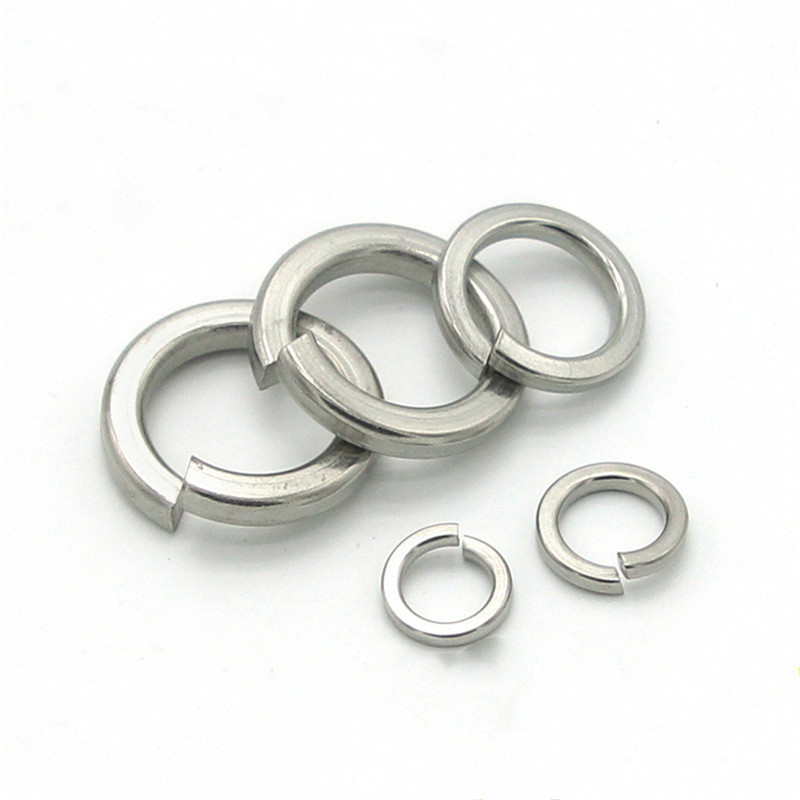
Ensuring Trustworthiness: Quality Assurance, Delivery, and Customer Support
For B2B entities, trustworthiness is the bedrock of any successful long-term partnership. When procuring critical components like din 127 spring washers, this trust is built upon a manufacturer's unwavering commitment to quality assurance, reliable delivery, and robust customer support. These elements collectively provide the confidence that products will perform as expected, arrive when needed, and be backed by comprehensive assistance throughout their lifecycle.
Rigorous Quality Assurance Protocols
A truly trustworthy manufacturer adheres to stringent quality assurance (QA) protocols that transcend mere compliance. This involves a multi-layered approach to ensure every din 127b washer meets the highest standards:
- In-Process Control: Continuous monitoring and inspection at every stage of the manufacturing process – from raw material receipt and forming to heat treatment and surface finishing. This proactive approach identifies and rectifies deviations early, preventing defects from propagating. Data-driven process control ensures consistent dimensional accuracy and mechanical properties, directly referencing parameters detailed in the din 127 b pdf.
- Batch Testing and Certification: Each production batch undergoes comprehensive testing, including dimensional checks, hardness tests (e.g., Rockwell C), flattening tests, and spring-back recovery tests. For coated washers, salt spray tests or other corrosion resistance assessments are performed to validate performance in specific environments. Comprehensive Material Test Reports (MTRs) and Certificates of Conformity (CoCs) are provided with each shipment, offering full traceability to raw material origins and detailing test results.
- Third-Party Verification: Reputable manufacturers welcome and often facilitate third-party audits and independent laboratory testing to validate product quality and compliance with international standards (e.g., ISO, ASTM, ANSI). This impartial verification adds an extra layer of assurance for clients in highly regulated industries.
- Advanced Metrology: Utilizing state-of-the-art measuring equipment, such as optical comparators, profile projectors, and automated vision systems, ensures micron-level precision in dimensional inspection, far surpassing manual measurement capabilities.
Reliable Delivery and Logistics
Timely and reliable delivery is as crucial as product quality, directly impacting project timelines and operational continuity. A trustworthy supplier of din127 spring washer products excels in logistics management:
- Transparent Lead Times: Clear and realistic lead times for both standard and custom orders are provided upfront. Any potential delays are communicated proactively with contingency plans suggested.
- Global Distribution Network: Access to an established global logistics network ensures efficient and cost-effective shipping to any destination, minimizing transit times and customs complexities. Strategic warehousing may be available for key regions.
- Inventory Management: For frequently ordered din 127 sizes, a manufacturer may maintain strategic inventory levels to facilitate rapid dispatch for urgent requirements, significantly reducing lead times for common components.
- Custom Packaging and Labeling: Ability to provide specialized packaging tailored to client's internal processes (e.g., specific carton sizes, barcode labeling for automated warehousing, or protective packaging for delicate finishes).
Comprehensive Customer Support and Warranty
The foundation of trustworthiness is completed by robust customer support and clear warranty commitments:
- Dedicated Technical Assistance: Access to experienced application engineers who can provide expert advice on product selection, installation best practices, and troubleshooting for din 127 related issues. This includes interpreting technical data from a spring washer din 127 pdf for specific project needs.
- Responsive After-Sales Service: A clear and efficient process for handling inquiries, feedback, or potential issues post-delivery. This includes a commitment to prompt resolution of any discrepancies or concerns.
- Product Warranty and Guarantee: A transparent warranty policy that outlines the manufacturer's commitment to product quality and performance, offering recourse in the rare event of manufacturing defects. This warranty signifies the manufacturer's confidence in their product's durability and adherence to specifications.
- Long-Term Relationship Focus: A commitment to building enduring partnerships by understanding client's evolving needs, offering proactive solutions, and consistently exceeding expectations. This includes periodic performance reviews and continuous improvement initiatives based on client feedback.
Frequently Asked Questions (FAQ) about DIN 127 Washers
- Q1: What is the primary function of a DIN 127 spring washer?
A1: The primary function of a din 127 spring washer is to provide a continuous spring force or preload in a bolted joint. This preload compensates for minor relaxation, creep, or embedment in the joint materials and helps to prevent the bolt and nut from self-loosening due to vibration or dynamic loads. It does not primarily increase friction but maintains tension. - Q2: What is the difference between DIN 127 Type A and Type B?
A2: Both types function as split spring washers but differ in their end profiles. DIN 127 Type A features square, chamfered ends, while DIN 127 Type B has coiled or plain, tangential ends. Functionally, they are very similar, and the choice often comes down to specific design preferences or availability. - Q3: What materials are DIN 127 washers typically made from?
A3: Most commonly, they are made from high-carbon spring steel (e.g., 65Mn, 60Si2Mn) for general industrial applications. For corrosive environments, stainless steel grades A2 (AISI 304) and A4 (AISI 316) are standard. Specialized alloys can also be used for extreme conditions. - Q4: Can DIN 127 washers be reused?
A4: While a din 127 washer may appear intact after removal, its spring properties can be significantly compromised after being flattened and subjected to loading. For critical applications, it is generally recommended to replace spring washers during disassembly to ensure optimal performance and joint integrity. Reusing them can lead to a reduction in initial preload and increased risk of loosening. - Q5: How do I choose the correct size of DIN 127 washer?
A5: The washer's internal diameter should match the nominal diameter of the bolt (e.g., an M10 bolt requires a din 127 M10 washer). Consult the technical specifications or a spring washer din 127 pdf for precise dimensional data (d1, d2, s) to ensure proper fit and function for your specific bolt and application requirements. - Q6: What surface treatments are available for DIN 127 washers?
A6: Common surface treatments include zinc plating (clear, yellow, black), hot-dip galvanizing, mechanical plating, black oxide, and phosphate coating. The choice depends on the required level of corrosion resistance, aesthetics, and application environment. - Q7: Are DIN 127 washers effective against severe vibration?
A7: DIN 127 washers are effective against moderate vibration and static relaxation. For applications with extremely severe or persistent dynamic loads, engineers might consider supplementary locking methods like wedge-locking washers (e.g., Nord-Lock) or chemical threadlockers in conjunction with or in place of split spring washers, depending on a thorough engineering analysis.

Industry Insights and Concluding Perspectives on DIN 127 Washers
The continuous demand for enhanced safety, efficiency, and longevity in industrial applications underscores the enduring relevance of components like the din 127 spring washer. While often overlooked due to their small size, their critical role in maintaining joint integrity is undeniable. Industry trends point towards an increasing focus on material science advancements, precision manufacturing, and the integration of digital tools for traceability and quality control within the fastener sector. This evolution aims to further refine the reliability and performance of standard components like the din 127b, ensuring they meet the escalating demands of complex engineering projects.
Future developments in the fastener industry, including those influencing the din127 spring washer, are likely to center on:
- Advanced Materials: Research into new alloys that offer superior strength-to-weight ratios, enhanced corrosion resistance, or performance in extreme temperatures will continue to expand the application scope of these washers.
- Smart Fasteners: While complex for simple spring washers, the broader trend towards "smart fasteners" with integrated sensors for real-time preload monitoring could influence quality control and application verification for even basic components, ensuring optimal torque and tension.
- Sustainable Manufacturing: Greater emphasis on environmentally friendly production processes, reduced energy consumption, and responsible sourcing of raw materials.
- Predictive Maintenance Integration: As industries move towards Industry 4.0, the reliability data gathered from components like din 127 washers will feed into predictive maintenance models, optimizing replacement cycles and reducing unplanned downtime.
The information contained within documents such as the din 127 b pdf and spring washer din 127 pdf remains fundamental for specifying and verifying these components. However, practical experience and direct engagement with reputable manufacturers, coupled with independent research and application testing, are invaluable for optimizing fastener selection in real-world scenarios. A deep understanding of these washers' technical properties and limitations allows engineers to confidently deploy them in critical assemblies, knowing they contribute significantly to the overall structural integrity and operational safety of the system. In conclusion, the din 127 washer, a deceptively simple yet profoundly effective component, continues to be an essential element in the robust design of mechanical systems across the globe. Its consistent ability to maintain preload and resist loosening makes it a fundamental choice for engineers who prioritize reliability and long-term performance.
As global industries continue to push boundaries in innovation and operational efficiency, the demand for reliable and precise fastening solutions like the DIN 127 spring washer will only grow. Engineers and procurement professionals must remain vigilant in selecting suppliers who demonstrate not only product quality but also a profound understanding of the complex interplay between material science, manufacturing precision, and real-world application demands. The emphasis on certifications, rigorous testing, and comprehensive support distinguishes true industry leaders and facilitates partnerships that drive mutual success and contribute to the safety and longevity of critical infrastructure worldwide.
References and Further Reading:
- ISO 10669: Fasteners - Non-electrolytically applied zinc flake coatings on threaded fasteners - Technical specifications. (Related to surface treatments for corrosion resistance, complementing DIN 127)
- The Function of Washers in Bolted Joints - Fastener Journal. (Provides general context on washer types and their mechanical roles)
- VDI 2230 Part 1: Systematic calculation of high duty bolted joints and joints with reduced cross section. (An authoritative German engineering guideline, often referenced for deep dives into bolted joint mechanics and washer effectiveness).
Post time: Aug . 10, 2025 09:00


